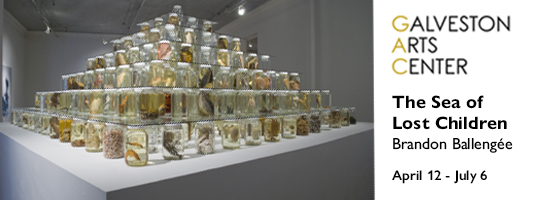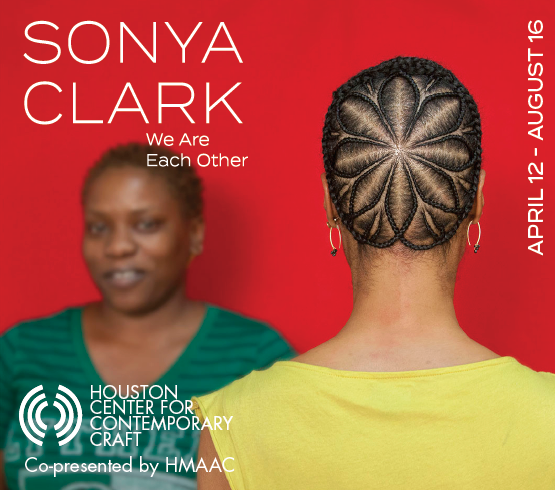Ruth Asawa Through Line is the first exhibition to focus on Ruth Asawa’s lifelong drawing practice. Drawing played a critical role in her work, as demonstrated by more than 130 drawings, collages, watercolors, sketchbooks, stamped prints, folded paper pieces, and copper-foil works included in the show. Organized by the Menil Collection and the Whitney Museum of American Art with support from the artist’s estate, it is on view at the Menil Drawing Institute through July 21.
About four years ago, Kopp and Kim Conaty, Whitney curator of drawings and prints, began investigating Asawa’s drawings. “This has been a four-year exploration since Edward and I began talking about Asawa’s work and specifically her drawings and what more might be learned from her drawing practice,” Conaty said. “Many of them were not known or shown during her lifetime, so we’re learning much about her art through her drawings.
“What we quickly learned after looking through hundreds of drawings and sifting through her extraordinary sketchbooks is that drawing was truly a daily process. There are certain motifs and themes she returned to throughout her life. Therefore, instead of taking a chronological approach, it made sense to approach the exhibition through the questions she was asking.”
Asawa first held a brush when she attended Japanese school in San Francisco, where she learned calligraphy. Her studies there also included origami, which would be reflected in her complex folded-paper pieces. Two decades later, Asawa studied calligraphy in depth with a Buddhist priest in the Bay Area, and its influence can be seen in many of her drawings.
In 1942, when she was 16, Asawa’s family and other Japanese Americans were taken from their homes after the Japanese bombed Pearl Harbor. The Asawas were detained in southern California, along with artists from Walt Disney Studios who befriended her. Subsequently, her family was sent to an incarceration camp in Rohwer, Arkansas, where a detained high school art teacher took her on sketching trips.
In 1946, Asawa enrolled at Black Mountain College, a private school that viewed the study of art as central to a holistic education. For three years, she studied with such influential artists and teachers as Josef Albers, Ilya Bolotowsky, Jacob Lawrence, Beaumont Newhall, Willem de Kooning, John Cage, Buckminster Fuller, and Merce Cunningham. She visited Albers while he was on sabbatical in Toluca, Mexico, and learned to crochet with wire from the craftspeople in the village

1 ⁄6
Ruth Asawa holding a paperfold, ca. 1970s. Gelatin silver print, 9 13/16 × 7 5/16 in. (24.9 × 18.6 cm). Courtesy of the Department of Special Collections, Stanford University Libraries. Photo: Laurence Cuneo. © 2023 Ruth Asawa Lanier, Inc. / Artists Rights Society (ARS), New York. Courtesy David Zwirner

2 ⁄6
Ruth Asawa, Untitled (SF.045a, Potato Print - Branches, Magenta/Orange), ca. 1951–52. Stamped ink on Japanese paper, 14 1/4 × 10 1/4 in. (36.2 × 26 cm) (approximate). Fine Arts Museums of San Francisco, Gift of the Artist. © 2024 Ruth Asawa Lanier, Inc./Artists Rights Society (ARS), New York. Courtesy David Zwirner. Photo: Jorge Bachmann

3⁄ 6
Ruth Asawa, Untitled (BMC.75, Double Sheet Clusters), ca. 1948–49. Stamped ink on paper, 17 1/4 × 22 in. (43.8 × 55.9 cm). Fine Arts Museums of San Francisco, Gift of the Artist. © 2024 Ruth Asawa Lanier, Inc./Artists Rights Society (ARS), New York. Courtesy David Zwirner. Photo: Randy Dodson

4 ⁄6
Ruth Asawa, Untitled (WC.134, Self Portrait), ca. 1960s. Ink on paper, 13 × 12 3/8 in. (33 × 31.4 cm). Courtesy Crystal Bridges Museum of American Art, Bentonville, Arkansas. © 2024 Ruth Asawa Lanier, Inc./Artists Rights Society (ARS), New York. Courtesy David Zwirner. Photo: Edward C. Robison III

5 ⁄6
Ruth Asawa, Untitled (BMC.124, Meander - Black and Red), 1949. Black and red inks and graphite on tracing paper, 17 1/8 × 22 in. (43.5 × 55.9 cm). Harvard Art Museums/Busch-Reisinger Museum, Gift of Josef Albers. © 2024 Ruth Asawa Lanier, Inc./Artists Rights Society (ARS), New York. Courtesy David Zwirner. Photo: © President and Fellows of Harvard College, BR49.387

6 ⁄6
Ruth Asawa, Untitled (BMC.128, Study in Repeated Vertical Angular Lines [Triangles]), ca. 1948–49. Black and purple inks over graphite on tracing paper, 16 3/4 × 22 1/4 in. (42.6 × 56.5 cm). Harvard Art Museums/Busch-Reisinger Museum, Gift of Josef Albers. © 2024 Ruth Asawa Lanier, Inc./Artists Rights Society (ARS), New York. Courtesy David Zwirner. Photo: © President and Fellows of Harvard College, BR49.386
Asawa was drawn to found objects, using them to explore pattern and texture in the section Found and Transformed. As an example, while working in the laundry room at Black Mountain College, she borrowed rubber stamps used to mark linens (“DOUBLE SHEET” and “BMC,” for example) to complete exercises for class, filling large sheets of paper with rhythmic abstract compositions. Later, she used leaves, potatoes, bike pedals, and even a whole fish to create inked drawings.
Forms Within Forms includes Asawa’s looped-wire sculptures, which are an extension of her drawings or, as she referred to them, “three-dimensional drawings in space.” These layered transparent sculptures are based on hourglass figures, biomorphic forms, and dancer motifs. One of Asawa’s continuous hanging forms is included with her drawings of similar structures.
The drawings in Growth Patterns were inspired by tree rings, flowers, and vegetables from Asawa’s garden. Starting from a central point, Asawa worked outward to fill the page. For the large Redwood 356, she drew an exhaustive cross-section of a giant redwood tree, detailing each of its 356 rings.
The final gallery is devoted to Life Lines, which reflect Asawa’s relationships with her family, friends, and colleagues, all of whom she drew. She was an active arts educator in San Francisco and often sketched people during meetings. She also organized informal drawing sessions in her home with friends. This section includes two rare self-portraits by the self-effacing artist.
Asawa’s multi-faceted drawings reflect the most intimate moments of her life, her relationship with nature, and her love of materials. Drawing was a constant in her life, and the results provide insight into not only her sculptures but her entire world.
—DONNA TENNANT





